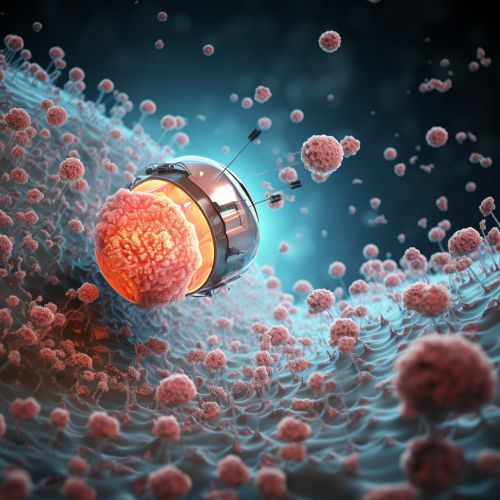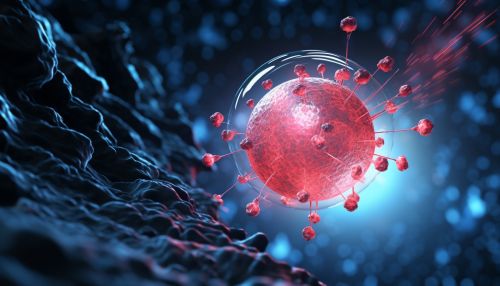Nanotechnology in cancer treatment
Introduction
Nanotechnology is a rapidly evolving field that has the potential to revolutionize cancer treatment. It involves the manipulation of materials at the nanoscale, typically between 1 and 100 nanometers (nm), to create new and innovative solutions to medical challenges. In the context of cancer treatment, nanotechnology offers the promise of highly targeted therapies that can deliver drugs directly to cancer cells, minimizing damage to healthy cells and potentially improving patient outcomes.


Nanoparticles in Cancer Treatment
One of the primary ways nanotechnology is being applied in cancer treatment is through the use of nanoparticles. These tiny particles can be engineered to carry therapeutic agents, such as chemotherapy drugs or gene therapy vectors, directly to cancer cells. This targeted delivery can increase the effectiveness of the treatment and reduce side effects.
Nanoparticles can be designed to recognize and bind to specific molecules on the surface of cancer cells, a feature known as active targeting. This allows the nanoparticles to deliver their therapeutic payload directly to the cancer cells, sparing healthy cells from damage. In addition to active targeting, nanoparticles can also take advantage of the unique physical and biological characteristics of tumors, such as their leaky blood vessels and poor lymphatic drainage, to accumulate in the tumor. This phenomenon, known as the enhanced permeability and retention effect, further increases the specificity of nanoparticle-based therapies.


Types of Nanoparticles Used in Cancer Treatment
There are several types of nanoparticles that are currently being investigated for use in cancer treatment. These include liposomes, polymeric nanoparticles, dendrimers, gold nanoparticles, and quantum dots, among others.
Liposomes
Liposomes are spherical vesicles composed of one or more phospholipid bilayers. They have been used in cancer treatment for several decades to deliver chemotherapy drugs. The first liposomal drug to be approved by the FDA was Doxil, a liposomal formulation of the chemotherapy drug doxorubicin, in 1995.
Polymeric Nanoparticles
Polymeric nanoparticles are composed of polymers, large molecules made up of repeating subunits. They can be designed to release their therapeutic payload in response to specific triggers, such as changes in pH or temperature, or the presence of certain enzymes. This allows for controlled drug release and can increase the effectiveness of the treatment.
Dendrimers
Dendrimers are highly branched, tree-like molecules. They can carry a large amount of therapeutic agents and can be engineered to have specific properties, such as the ability to penetrate cell membranes or to evade the immune system.
Gold Nanoparticles
Gold nanoparticles have unique optical properties that make them useful for both diagnostic and therapeutic applications. They can be used to enhance the contrast of medical imaging techniques, such as computed tomography (CT) scans, and can also be used to deliver heat to tumors when irradiated with light, a technique known as photothermal therapy.
Quantum Dots
Quantum dots are tiny semiconductor particles that can emit light of different colors depending on their size. They can be used for imaging tumors and for tracking the distribution of drugs in the body.


Challenges and Future Directions
While nanotechnology holds great promise for cancer treatment, there are several challenges that must be overcome before it can be widely adopted. These include issues related to the safety and toxicity of nanoparticles, their potential to trigger immune responses, and the difficulty of manufacturing nanoparticles with consistent properties.
Despite these challenges, the field of nanotechnology in cancer treatment is rapidly advancing, and numerous clinical trials are currently underway to evaluate the safety and efficacy of nanoparticle-based therapies. With continued research and development, nanotechnology has the potential to significantly improve the way we treat cancer.
